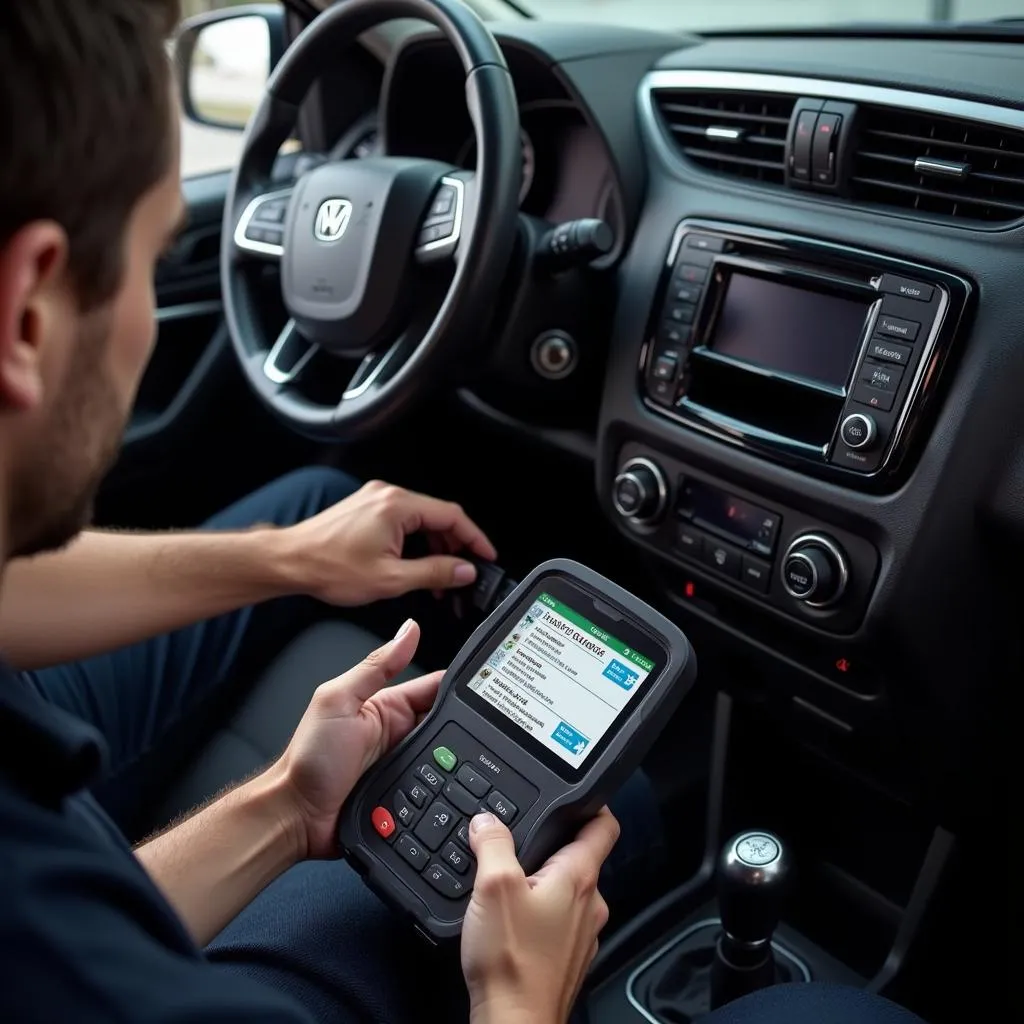The OBD II port, often found under the dashboard on the driver’s side, has revolutionized car repairs and diagnostics. This universal interface allows mechanics and car enthusiasts alike to tap into the electronic brain of a vehicle, retrieving valuable information about its health and performance.
What is an OBD II Port and What Does it Do?
Short for On-Board Diagnostics, version II, the OBD II port is a standardized 16-pin connector mandated in vehicles manufactured after 1996 in the United States. Think of it as a window into your car’s various systems, from the engine and transmission to the airbags and emissions control.
 OBD Port Location
OBD Port Location
By connecting a compatible device, such as an OBD2 software or scanner, you can access a wealth of data, including:
- Diagnostic Trouble Codes (DTCs): These codes pinpoint specific areas where the car’s computer has detected a malfunction.
- Sensor Data: Real-time readings from various sensors throughout the vehicle, like oxygen levels, engine temperature, and speed.
- Freeze Frame Data: A snapshot of the engine’s operating conditions at the time a fault code was triggered.
- Vehicle Identification Number (VIN): Unique identifier for your specific vehicle.
Unveiling the Power of the OBD II Port
The beauty of the OBD II port lies in its versatility and accessibility. Here’s how it benefits car owners and mechanics:
- Simplified Diagnostics: No more guesswork! Mechanics can quickly identify the root cause of a problem, saving time and costly repairs.
- DIY Repairs: With the right automotive scan tool, car enthusiasts can diagnose issues themselves, potentially saving money on mechanic fees.
- Performance Monitoring: Track your car’s performance in real-time, monitor fuel efficiency, and even measure horsepower and torque.
- Customization: Some advanced scanners allow you to adjust certain vehicle parameters, like shift points and idle speed.
 Mechanic Using OBD Scanner
Mechanic Using OBD Scanner
Beyond Cars: OBD II in Heavy Duty Trucks
The OBD II port isn’t limited to passenger vehicles. Heavy duty truck diagnostic equipment also utilizes this technology to diagnose complex issues in commercial vehicles. This is crucial for minimizing downtime and keeping fleets running smoothly.
Choosing the Right OBD II Scanner
With a wide array of OBD II scanners available, selecting the right one depends on your needs and budget. Basic code readers provide DTC information, while more advanced models offer live data streaming, graphing capabilities, and even wireless connectivity.
“When choosing an OBD II scanner, consider the features you need and the level of technical expertise you possess,” advises automotive electronics expert, John Miller. “For basic diagnostics, a simple code reader may suffice. However, professional mechanics and serious DIYers benefit from the advanced features of high-end scan tools.”
The Future of OBD II
As technology advances, the OBD II port continues to evolve. We can anticipate even more sophisticated diagnostic capabilities, enhanced data security measures, and seamless integration with smartphones and cloud-based services.
 Smartphone Connected to OBD Port
Smartphone Connected to OBD Port
Conclusion
The OBD II port has transformed the automotive landscape, empowering car owners and mechanics alike with unparalleled diagnostic capabilities. From simple code reading to advanced performance monitoring, this universal interface has become an indispensable tool for anyone seeking to understand and maintain their vehicle’s health. With continued technological advancements, the OBD II port promises to play an even more significant role in shaping the future of automotive diagnostics.